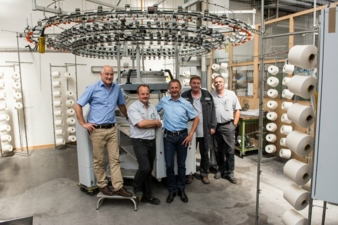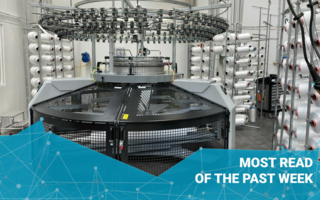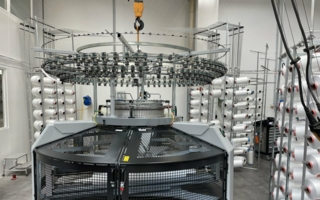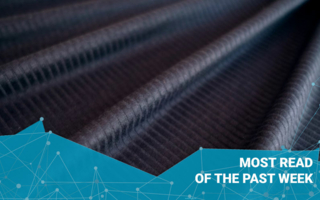09/11/2017 – Mayer & Cie. — auf Deutsch lesen
30 years Relanit - an interview
Cutting edge, trendsetting, 30 years old and one of Mayer & Cie.’s (MCT) most important and most successful machine types. Relanit uses relative technology, the circular knitting machine manufacturer’s proprietary development, launched at ITMA in 1987, when the trade fair opened on 13 October in Paris. In its current version, the Relanit 3.2 HS is one of the most productive single jersey machines on the market.
From the 1987 ITMA onwards, Mayer & Cie. started receiving orders for machines with relative technology. The first three Relanits were shipped to Berlin in January 1988. Jürgen Müller assembled them. He is still with Mayer & Cie. today, as are his colleagues Johannes Bitzer, Axel Brünner, Rolf Gonser and Thomas Maier. Back in 1987, all five of them were working as technicians in final assembly. textile network talked to them.
textile network: Even before the Relanit went into series production there must have been talk about the new technology. Were you aware that this new machine was going to be something special?
Johannes Bitzer: Yes, I think we were, but we didn’t really take it on board at the time. During the development stage, we still had no clear idea of what was different about it. That didn’t happen until the machine arrived in the assembly department and we had to deal with it.
Axel Brünner: Technicians from the assembly department were sent to the customer to set up and service the machine. Today, that’s the job of the full-time travelling fitters in the service department.
tn: More than 500 machines were sold in less than three years and 1,000 in four years. That was remarkable.
Looking at the Relanit, technically speaking, there’s nothing to change but the stitch length. This meant that the Relanit was a springboard for us youngsters to acquaint ourselves with the technology. For that reason alone, I’ve always been fascinated by the technology.
tn: Did any of the uses for the Relanit surprise you?
Axel Brünner: It’s ability to cope with difficult yarns and poorer qualities. That was why it was a success in countries where these kinds of yarn were often used. The relative movement, which involved fewer deflection points, was precisely the advantage we wanted to put to good use. That was why we were so successful so quickly in Egypt, for example. The good cotton was hand-picked and sold by the state to earn foreign exchange, whilst the local knitters were left to process the rest. This worked extremely well with the Relanit.
Jürgen Müller: It wasn’t only poorer quality yarns but thicker yarns too. Yet the machine ran at full capacity where others would have to slow down by 50 per cent.
tn: What is your fondest memory?
Axel Brünner: It’s always a good feeling to see how our own machines compared with the competition and to know that the sales figures were good. If you identify with the firm, you identify with the product too.
Thomas Maier: It was also soon clear to us that the success of the product safeguarded our jobs. For a while, we were manufacturing nothing but Relanit.
tn: Why is this technology still cutting-edge after 30 years?
Axel Brünner: It’s like the GTI. It’s no longer the car it was 30 or 40 years ago; it developed further to where it is today. The technology has grown over the years.
tn: And the customers, do they stick with Relanit?
Axel Brünner: Yes, absolutely. We have regular customers who swear by these machines. They are aware of the benefits and put them to good use. It wouldn’t be true to say that they’re always the right solution, but there is a certain product area for which they are perfect.
Thank you for talking to us!




